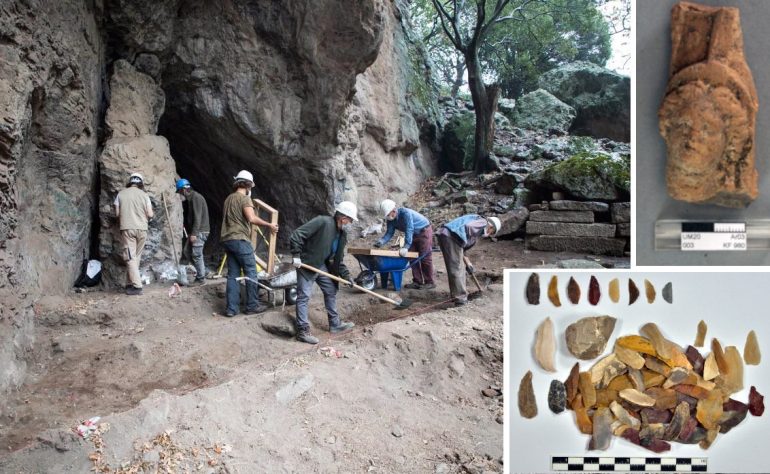Discoveries of the Stone Age, Antiquity and Beyond: Archaeologists report on an ancient and multilayered cave site on the west coast of Turkey. In the lower layer, they discovered stone tools and bones dating back 14,000 years and thus coming from the so-called Post-Paleolithic period. These traces are in turn covered with the remains of a sanctuary of the ancient mother goddess Meter-Cybele. Further exploration shows that the place was visited by people until the Byzantine and Islamic eras, before it was apparently forgotten.
Being located “between East and West”, the area of present-day Turkey has been of great importance in human cultural development since ancient times. This is evidenced by, among other things, the transition from hunter-gatherer cultures to rural communities by the famous Gobekli Tepe site. There people built as early as the 10th millennium BC. The first monumental buildings. These early structures have been assigned to the Neolithic period. However, in the territory of present-day Turkey only a few traces from earlier stages of human history are known. Particularly from the west of Anatolia – the area of contact with the Aegean Sea and thus Europe – there have been no discoveries from the Palaeolithic or its transition phase to the Neolithic.
But as the German Institute of Archeology (DAI) reports, this has changed: as part of an archaeological exploration, archaeologists discovered human use in a remote cave located upstream of a river between the modern cities of Dikli and Bergama (Pergamon). Ancient traces of In autumn 2021, a Turkish-German team excavated the front and inside of the cave. DAI is reporting on the findings so far.
Stone Age under an ancient sanctuary
The use of the cave dates from the so-called Post-Palaeolithic (Epipaleolithic): layers with stone tools and bones can be dated to an age of about 14,000 years using the radiocarbon method and examination of stylistic features. As the archaeologists point out, the cave apparently served as a seasonal living and production facility for a group of hunters and gatherers at the time. In addition to the bones of many animals, raw materials for tool manufacturing and semi-finished pieces are evidence of this. People used flint from the river bed below the cave entrance as raw material.
But the site isn’t just about that: the team found small traces inside and in front of the cave. Therefore it was also used in the period between the 3rd and 2nd millennium BC. The exact dating and interpretation of these Bronze Age marks is still pending. However, even more recent discoveries provide more clarity: according to this, the cave was constructed from the 6th century BC. Used as a sanctuary for the mother goddess Meter-Cybele until the Roman Empire. Among other things, this is evidenced by the discovery of part of a terracotta statue of the goddess with her distinctive crown.
amazing continuity
As the DAI further reports, the most recent discoveries also include the Byzantine and Islamic periods. DAI writes, “If you take into account the remoteness of the place, which is difficult to reach on foot, this speaks to a remarkable continuity in the relationship between people and this extraordinary natural monument, across the boundaries of ages and religions.” “
It will be interesting to see what archaeologists find out about this mysterious place. Further investigation will deal with the question of why the Stone Age peoples chose this location as their camp and whether there were any indications of relations with interior Anatolia, the Aegean Sea, and mainland Greece.

Web guru. Amateur thinker. Unapologetic problem solver. Zombie expert. Hipster-friendly travel geek. Social mediaholic.





